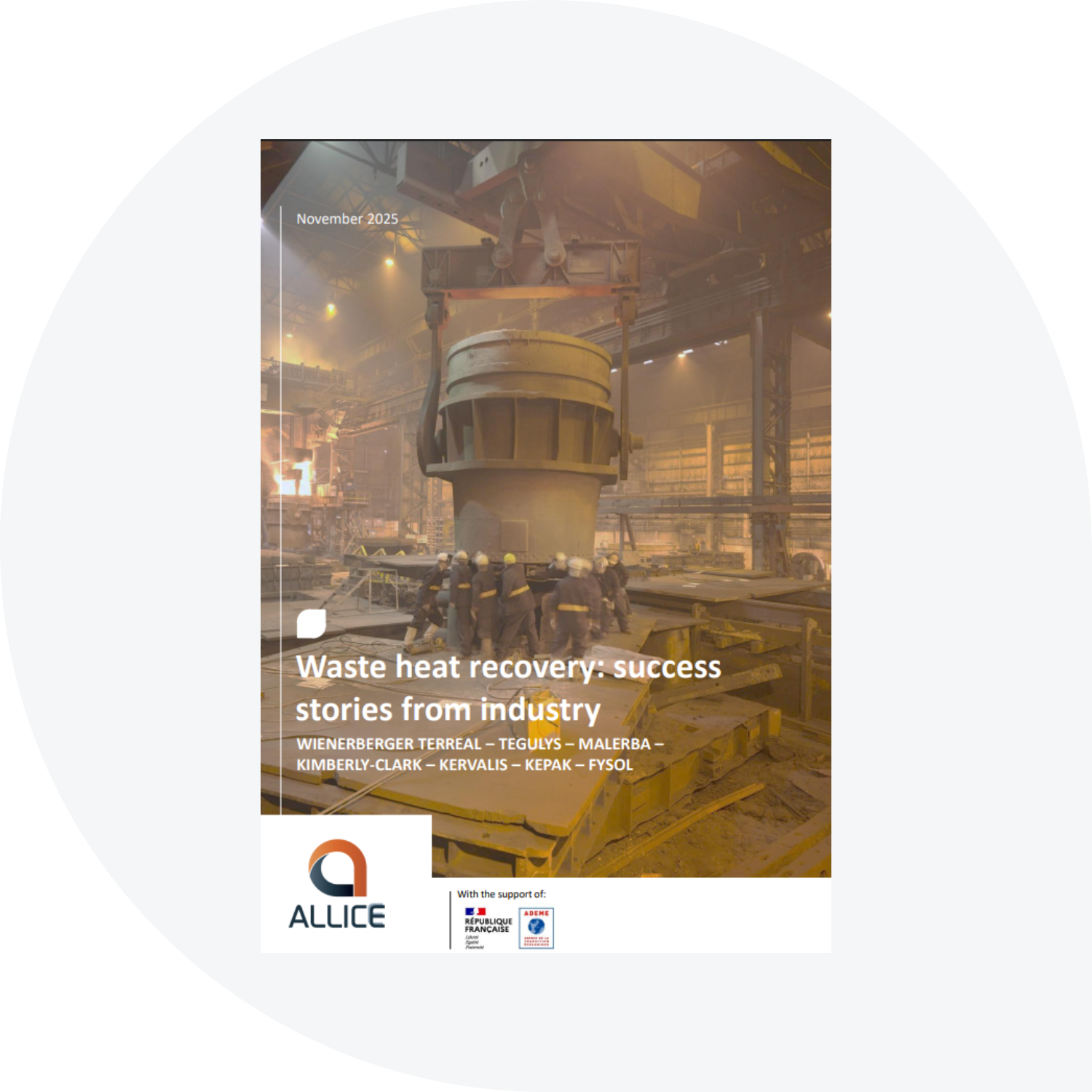
Waste heat recovery : Publication of 7 success stories from industry
At a time when energy transition is becoming a strategic imperative for industry, waste heat recovery is emerging as an essential lever. Accessible, rapidly deployable and cost-effective, it enables industrial sites to immediately reduce their fossil fuel consumption and CO₂ emissions, while strengthening their competitiveness. However, each site has its own specific resources, and solutions must be adapted to its technical, economic and organisational constraints. With this aim of providing concrete support to manufacturers, the ALLICE Alliance is publishing a series of seven case studies illustrating a variety of projects that have been tested in the field.
The REX reports highlight the longevity of the installations, with operating lives ranging from 2 to 10 years.
Manufacturers and solution providers share their collaborations and feedback on specific waste heat recovery and utilisation projects from a variety of sectors.
Some of these projects were presented at our biennial ALLICE Congress and FIRE (an event dedicated to waste heat).
Each case study presents:
- the scope of the project and the process involved,
- the decision-making criteria that guided the choice of solution,
- the progress of the project (planning, financing),
- and the results obtained in terms of energy savings.
• TERREAL and Dalkia, on the recovery of intermittent heat from a kiln to power a tile dryer;
• Tégulys and Ecotecheram, on the recovery of drying vapours with thermal enhancement using a heat pump;
• Malbera and JMOOS, on heat recovery from a surface treatment furnace (paint baking);
• Kimberly-Clark, with recovery from paper drying vapours;
• Kevalis and Terrao, on heat recovery from contaminated vapours at an animal product manufacturing site;
• Kepack and Thermal Energy International, on the recovery of heat from contaminated vapours in a slaughterhouse;
• Fysol and Coretec, for the recovery of heat from a glass furnace to supply drying lines.
Detailed project sheets that cover all aspects of WASTE HEAT RECOVERY projectS.
These experiences confirm one thing: waste heat is a largely untapped energy source that can bring immediate benefits to manufacturers. Whether it's reducing costs or improving environmental performance, these projects show that solutions exist, are mature and are already operational.
By sharing these concrete achievements, the ALLICE Alliance hopes to inspire and guide other manufacturers towards similar initiatives, in order to collectively accelerate decarbonisation.

